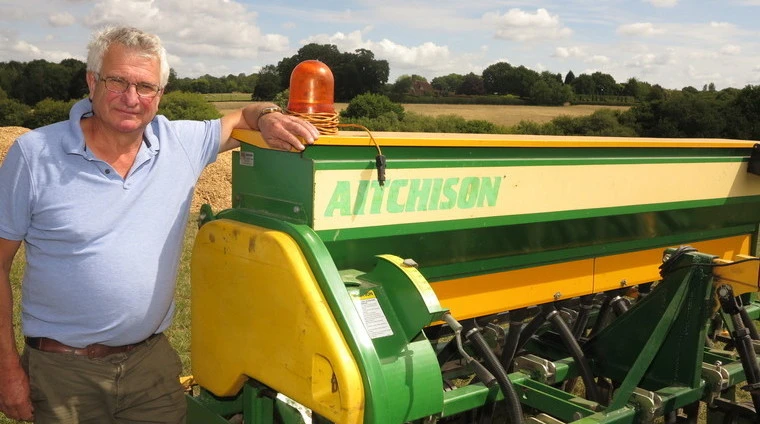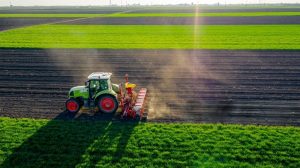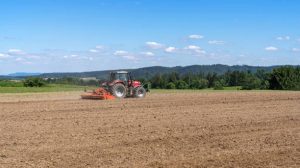The seed drill’s importance stems from its revolutionary impact on agriculture, changing the way seeds are planted and influencing farming practices on a global scale. Here’s why it was such a groundbreaking invention
The seed drill did several things to revolutionize agriculture:
1. Precise Planting: It replaced the scatter-shot approach of hand-sowing with meticulous precision. Instead of tossing seeds randomly, the drill:
- Metered out individual seeds: ensuring proper spacing and preventing overcrowding.
- Planted seeds at a predetermined depth: creating optimal conditions for germination and protecting them from predators and harsh weather.
- Placed seeds in neat rows: facilitating weed control, irrigation, and fertilization.
2. Efficiency and Reduced Waste:
- Seed drills significantly reduced the time and labor required for planting.
- Accurate metering eliminated wasted seeds, saving farmers money and resources.
- Increased planting speed allowed farmers to cover more ground in less time.
3. Resource Management and Sustainability:
- By planting seeds at the optimal depth, drills promoted efficient water and nutrient utilization, reducing fertilizer needs and minimizing environmental impact.
- Minimized soil disturbance during planting helped prevent erosion and maintain soil health for long-term sustainability.
4. Increased Yields:
The combined effects of precise planting, efficiency, and resource management led to a dramatic increase in crop yields. Farmers could expect 20-50% higher harvests compared to traditional methods.
Overall, the seed drill transformed agriculture from a laborious and imprecise practice to a more efficient and productive one. It improved yields, reduced waste, and promoted sustainable farming practices, leaving a lasting impact on how we feed the world.
Is the seed drill still used today?
Yes, the seed drill is still used today! It’s become an essential tool for farmers around the world, playing a crucial role in modern agriculture.
Here’s why the seed drill remains relevant:
- Increased Yields and Efficiency: Compared to the old-fashioned method of hand-sowing, seed drills ensure precise seed placement and spacing, leading to 20-50% higher crop yields. They also significantly reduce planting time and labor, allowing farmers to cover more ground with less effort.
- Resource Management and Sustainability: By planting seeds at the optimal depth, seed drills promote efficient water and nutrient utilization, minimizing fertilizer needs and reducing environmental impact. Additionally, minimal soil disturbance during planting helps prevent erosion and maintain soil health for long-term sustainability.
- Technological Advancements: Modern seed drills are far more sophisticated than their early counterparts. Today’s models often feature GPS guidance, enabling them to navigate fields with pinpoint accuracy and adjust seed placement based on specific soil conditions. Some even incorporate variable rate seeding, automatically adjusting the seed density based on soil quality and crop requirements.
- Global Impact: Seed drills are used extensively worldwide, contributing to global food security by increasing food production and reducing reliance on manual labor. This is particularly crucial in developing countries where access to technology and resources is limited.
Overall, the seed drill’s continued use testifies to its enduring effectiveness and adaptability. As technology continues to evolve, we can expect even more innovative seed drill designs in the future, further pushing the boundaries of precision agriculture and contributing to a more sustainable and productive farming landscape.
zero till seed drill is used for sowing?
right! Zero-till seed drills are a specific type of seed drill used for sowing seeds directly into unplowed soil. This means they bypass the traditional tillage process, which involves turning over the soil, and instead plant seeds straight into the existing residue from the previous crop.
Here’s why zero-till seed drills are used:
- Improved Soil Health: Avoiding tillage minimizes soil disturbance, which helps preserve soil structure and organic matter. This leads to improved soil health, increased water-holding capacity, and reduced erosion.
- Moisture Conservation: Unplowed soil retains moisture more effectively than tilled soil, which is particularly beneficial in dryland conditions. This can lead to improved plant growth and higher yields.
- Time and Cost Savings: Eliminating tillage saves farmers significant time and labor compared to conventional planting methods. This can translate to cost savings and increased efficiency.
- Reduced Carbon Footprint: By avoiding tillage, zero-till seed drills contribute to lower carbon emissions compared to conventional methods. This is because tilling releases stored carbon dioxide from the soil into the atmosphere.
-
Increased Organic Matter: The undisturbed residue from previous crops left on the surface acts as a mulch, promoting the decomposition of organic matter and further boosting soil health.
Types of Crops Sown with Zero-Till Seed Drills:
While not suitable for all crops or soil types, zero-till seed drills are commonly used for sowing:
- Cereals: Wheat, barley, corn, oats
- Oilseeds: Soybeans, canola
- Cover crops: Rye, clover, winter peas
Considerations for Using Zero-Till Seed Drills:
- Requires careful management: Successful zero-till farming requires proper weed control and management of crop residue to ensure optimal results.
- Initial investment: Specialized zero-till seed drills can be more expensive than conventional drills.
- May not be suitable for all soils: Heavy clay soils or fields with significant weed pressure may not be ideal for zero-till.
Overall, zero-till seed drills offer a sustainable and efficient alternative to traditional planting methods. Their benefits for soil health, moisture conservation, and cost savings make them a valuable tool for farmers looking to improve their operations and contribute to environmental sustainability.




